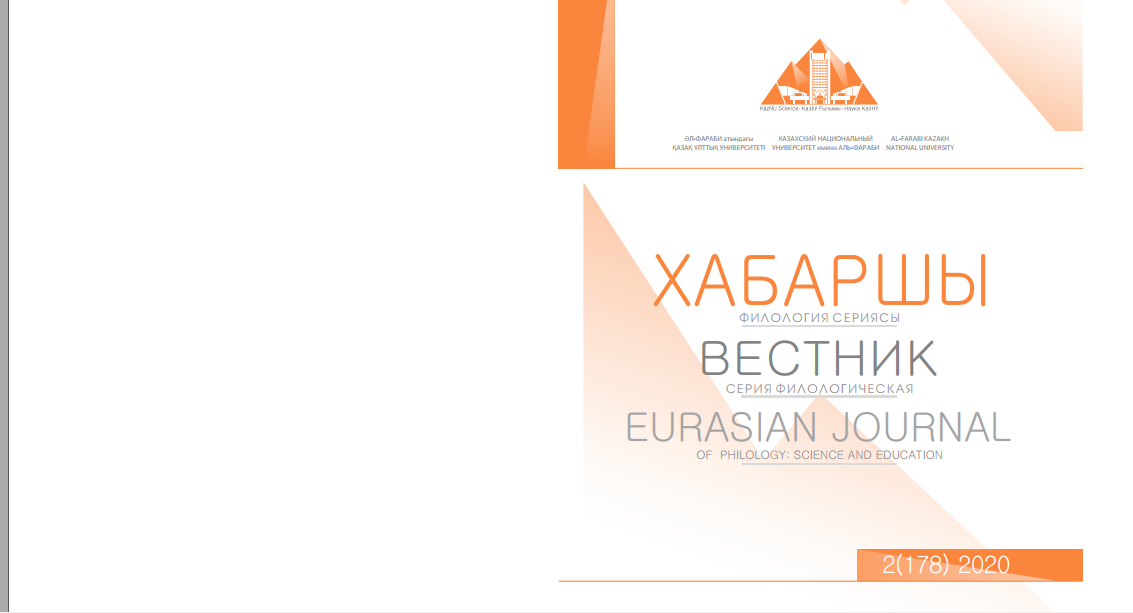The lexical properties of the nogai epic stories
DOI:
https://doi.org/10.26577/EJPh.2020.v178.i2.ph9Abstract
The article deals with the linguistic-poetic and lexical-semantic features of historical epics and heroes of the Nogai era, which left a fundamental trace in the political and legal development of the nomadic society of Eurasia.
Nogai Orda was one of the largest structures that appeared on the territory of Kazakhstan after the
weakening of the Ak Orda and the collapse of the great AltynOrda.
Ten Nogai tribes brought with them a rich literary heritage at the time when they became part of the
Kazakh people. The poetic and rich poetry of the Nogai people developed and improved the norms of
the oral Kazakh literary language. As well as the epic works of the Nogai era of the Kazakh, Nogai and
Bashkir tribes speaking the same Turkic languages, left a big mark in the lexical basis and in the composition of these languages.
The lexical and semantic features of the Nogai epics are rich in didactic contents, have a deep philosophical meaning, various expressions and emotions, words of edification, aphorisms, periphrases and
syntactic parallelisms.
Epic tales and historical epics of the Nogai era have a rich lexical composition, as it includes such
thematic groups as toponomic names, anthroponyms, ethnonyms, military vocabulary, zoonymies, socio-political vocabulary, theological vocabulary and abstract concepts, household vocabulary.






